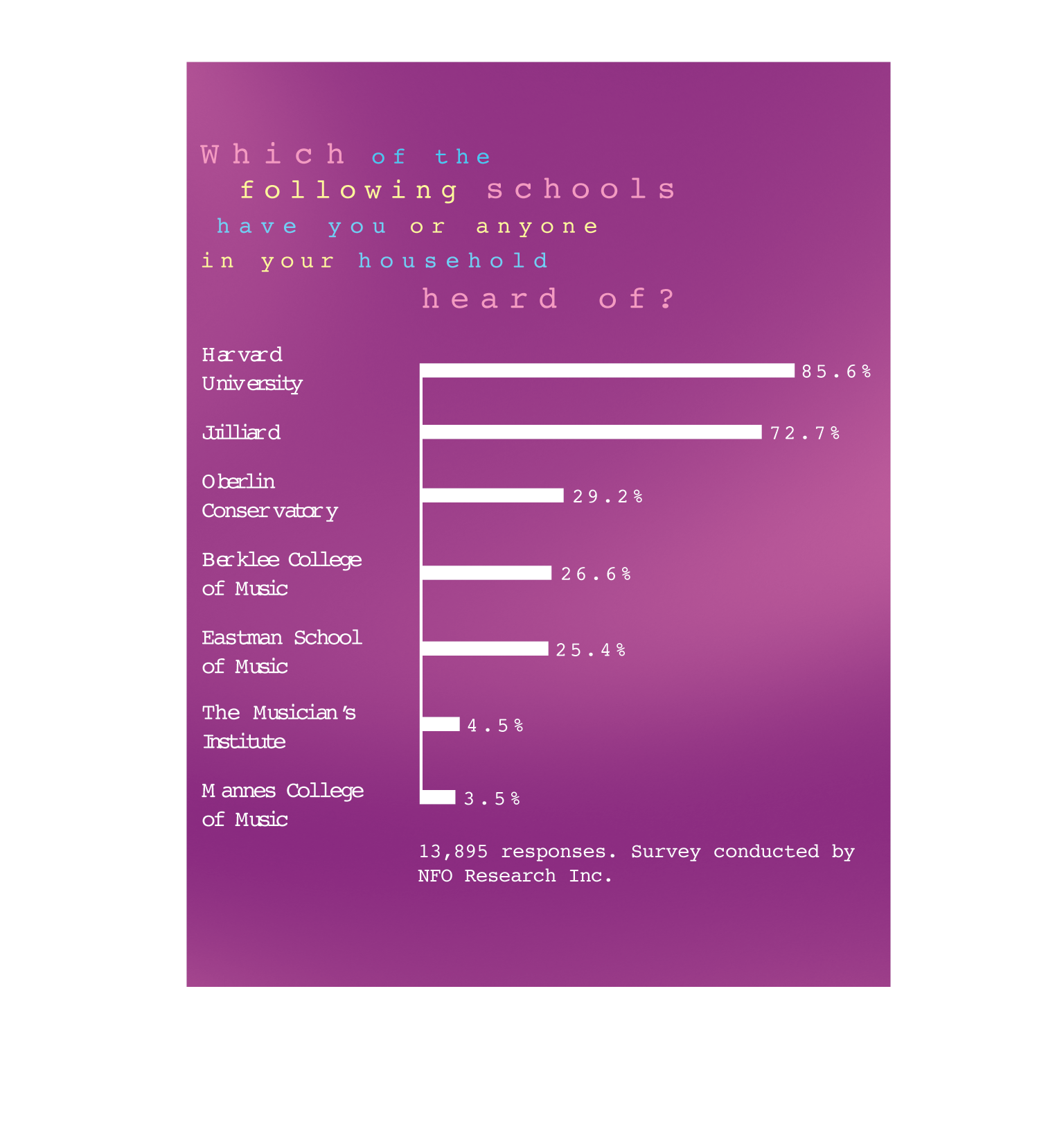The Benefits of Name Recognition

Image Advisory Group
After conducting this survey, the college formed a representative committee, the Institutional Image Advisory Group (IIAG), to study the benefits of increased name recognition.
We examined the long-term success of Juilliard, which, according to our survey, is synonymous with classical-music education to 73 percent of Americans. We also studied the success of the Sundance Company. Starting as a small festival for independent filmmakers and having minimal advertising, it has become a world-class film festival, a movie channel, and an international platform for independent filmmakers seeking a forum and recognition for their work.
The IIAG concluded that name recognition is crucial for institutional growth and therefore recommended as a strategic initiative for the college, a program to increase Berklee’s visibility. Some of the benefits we would achieve from greater public recognition include:
•the ability to continue to attract talented
students, faculty and staff, which maintains
utmost quality in the Berklee experience;
•increased financial support for scholarship
programs, which enables Berklee to
remain affordable and to support
other college initiatives;
•increased value of the Berklee degree,
which encourages alumni participation
and donations;
•increased media coverage, which provides
even greater visibility for the college;
•increased corporate support through in-
kind gifts and cobranding initiatives; and
•a platform for achieving a range of
initiatives.
Finally, perhaps most important, by increasing Berklee’s name recognition with the general public, we will be better able to serve the field of contemporary music.
Berklee 2005
With this initiative approved as part of Berklee’s strategic plan for 2000 through 2005, we selected New York-based Siegelgale, a leading corporate-identity firm to work with us. Over the next several months, they will help us research Berklee’s identity and public perceptions of Berklee.
Here is Siegelgale’s assessment of our current position and the work that lies ahead.
“In 1945, Berklee was the first school of music to be founded upon the iconoclastic concept that professional musicianship could be taught through contemporary music. Today, you still have no competitors—although not for a lack of imitators. The power of the idea has been borne out: Berklee has proven itself to be the demonstrably better choice for musicians who want to make a life and a career in music.
Recently, Berklee has reached a new level of cultural currency. References [to the college] in the mass media are more and more frequent—due in no small part to the success of your alumni. You see an opportunity to raise your profile in the public consciousness even further, helping to increase your endowment and donor pool, as well as making Berklee a more powerful advocate for contemporary music.
For Berklee to achieve this new level of awareness, we must define what is essential about you in a way that is understandable, credible, memorable, and supportive of your long-term goals. That definition will guide all our subsequent work, from messaging to visual identity.”
To accomplish this, they will interview students, faculty, alumni, staff, parents, and representatives of the music industry. They will also review other institutions similar to Berklee to see how they go about achieving recognition and support. In addition, many of you took the time to answer questions in a recent alumni survey about Berklee’s strengths. Your responses will provide valuable information for the initiative.
Siegelgale will conduct their work in three phases, which they designate as definition, expression, and management. After each phase, there will be an opportunity for the Berklee community to provide feedback. The project is expected to take about 12 months, and you can read about its progress in future issues of Berklee Today. If you would like to offer any suggestions about this project, please write to the Institutional Image Advisory Group at triley@berklee.edu.




